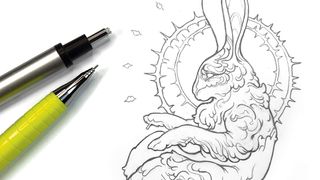
Sharpen your skills with these pencil drawing techniques, for both graphite and coloured pencils.
When you purchase through links on our site, we may earn an affiliate commission. Here’s how it works.

These pencil drawing techniques from top artists will help you take your drawing skills to the next level, whether you're using graphite pencil or coloured pencils.
For many artists, pencil drawing is the skill that introduced them to the art world, and even if you've moved on to a different medium, understanding how to draw with a pencil can help you improve your skills elsewhere. These pencil drawing techniques cover everything from the basics of mark-making to advanced processes to push you out of your comfort zone.
We'll also offer advice on the tools and materials you need to know, such as blending stumps, paper options, and different erasers. For some extra inspiration, check out the most unbelievably realistic pencil drawings we've ever seen.
Short on time? The video above, from character designer Bobby Chiu, runs through some pencil drawing techniques in action. For more in-depth advice on composition to how to capture light and shadow, take a look at our art techniques article, for practical buying advice see our guides to the best pencils and best pencil sharpeners. Or, for inspiration, take a look at this roundup of unbelievably realistic pencil drawings.
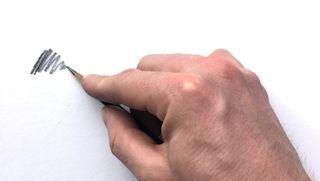
The first step is to master how to hold a pencil correctly. Chiu recommends holding the pencil like you could a piece of charcoal, and using the side of the lead to draw, rather than the point. This helps keep the pencil sharper for longer.
"When covering large areas, I shade with my pencil perpendicular to the line I'm drawing to get wide, soft lines," he adds. "For details, I hold my pencil parallel to my lines to get sharp, narrow marks. The only time I use the point is when I'm working on intricate details."
"It is important to consider where you are making your mark from – fingers, wrist or shoulder," adds artist Jake Spicer.
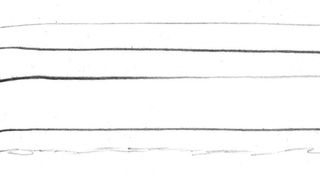
The kind of marks you're making will shape the feel and look of your pencil drawing. Things like how fast you draw a line and the weight you put into a stroke will change the look of the line. "A heavy line is dark and definite; a lightly drawn line is pale and exploratory," says Spicer. "When you are starting out, try to avoid uncertain, feathery marks."
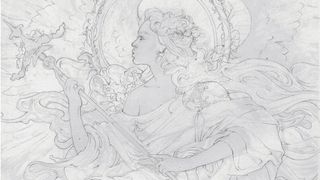
Many artists prefer to start their pencil drawing by laying out the scene with a rough, light underdrawing – this can be especially useful if the end game is a precise line drawing. "Having a more fluid foundation helps you see the end result without the intimidating commitment of getting everything perfect," says artist Timothy von Reuden.
For a pencil underdrawing, make sure you use a hard lead (around 2H) to ensure the lines are light and easy to erase. Alternatively, you could use a digital underdrawing, printed at 1 per cent Opacity. Either way, make sure this acts as a foundation rather than a strict guide. "I strongly believe in letting intuition take over in the creation process, so I work with the underdrawing more as a guideline," continues Von Reuden.
Pencils are prone to smudging, and the softer they are, the more difficult it is to keep things clean. However, planning which area of the composition you work on first can help. Essentially you don't want to be resting your hand on areas you've already drawn, which means that unless you have an unusual pencil grip, you want to be working top to bottom. Then right-handers should work left to right, and lefties move right to left.
One common exercise to start out with is blind contour drawing. "Set up a subject in front of you and fix your eye on the top of it, placing your pencil on your paper. Without looking down at the paper, trace your eye around your subject, following its edges and contours, and as you do so, let your pencil follow the same journey on the paper," explains Spicer. "Draw in a single, unbroken line and don’t look back at the drawing until you are finished."
The result will look odd and incorrect, but that's not a problem. The aim of this is to help you draw confidently and unselfconsciously, and it's a great way to overcome a fear of staring at a blank page. "Repeat the exercise regularly as a warm up to get your hand working together with your eye," suggests Spicer.
You can adapt the exercise by flicking your eye down to the page at regular intervals, and trying to adjust your line style and weight to accurately describe what you see (you're still using one, unbroken line). "Don’t aim for precisely accurate proportion, instead aim for an honest process of looking and mark making, without overthinking the drawing," he concludes.
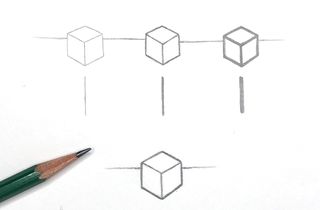
Varying the thickness of the line you use help guide your viewer through your drawing, explains Von Reuden. Thicker lines can help indicate importance, or tell the viewer that something is in the foreground of the scene. They can also be used to distinguish between two separate, overlapping objects – a thicker line on the outside of an object an help differentiate the outside lines of the subject matter from the lines that represent the details within.
In the example above, you can see how different line weights can be combined to make a form appear more three-dimensional.
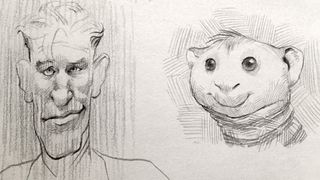
There are lots of different pencil drawing techniques relating to shading. Chiu uses two main approaches. The first is with all the lines going in the same direction. "This makes my shading appear more cohesive, and helps my details pop out from the lines I'm using for shading," he explains.
The second method involves working in patches of shading, to help define shape. "Patches of lines go around the form, which help keep things in perspective," he says. This technique is also great for backgrounds and creating texture.
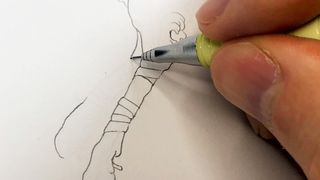
If you're working on a detailed area, be wary of your pencil line. "When it comes to creating cleaner and tighter line work, staying consistent is key," says Von Reuden. "Not only should you be aware of the look of your line but also the pressure you’re applying to the pencil and on the paper. Be actively aware at this stage and don’t rush it." He suggests regularly stepping back to check the overall effect of your work, and ensure you're keeping your line steady throughout.
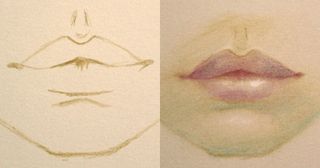
US-based artist Jennifer Healy has a specific process for blending her coloured pencil work. She starts with an outline, to check the form is correct before committing to coloured pencil (it's much harder to erase coloured-in areas than an outline). It also helps her plan where the highlights and shadows will fall.
She then builds up colour using subtle layers. "I like to start out with soft gentle layers to gain a better idea of lighting placement, shadows and the colour palette," she says. After each layer she blends gently using the blending stump.
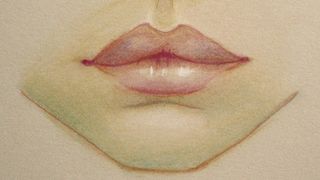
Once she has reached a stage she's happy with, she moves on to the final step: adding an outline. For this final layer, Healy uses coloured pencils alone, and does not blend with a stump.
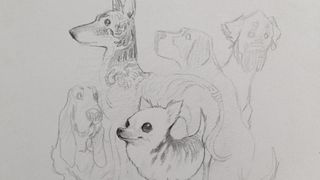
"When I start drawing, I plan and explore using loose lines, and avoid committing too early with hard, dark lines," says Chiu. "As I progress my lines will change, so checking and rechecking my work is vital. I darken my lines and add details at the end. I don't focus on one area for too long to prevent overdrawing."
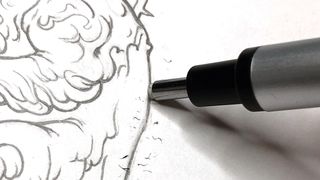
Your eraser can be just as important as the pencil itself. There are a few different types (see the Tools section for more on this), but whichever you choose you want to make sure it's close to hand whenever you're working. "Whenever a line gets too thick, I either erase the entire line or try to line up the eraser edge to slim down the existing line," says Von Reuden. "I like to clean up during the entire process and at the end do a final sweep to make sure I didn’t miss an area before calling it done."
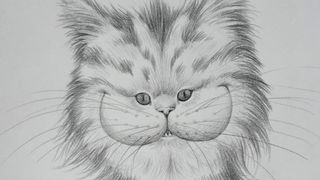
Before you move on to stronger lines and detail work, it's essential to make sure you have the correct form down. Chiu's advice is to check and check again. "I have to nail down my drawing's underpinnings before I can add details. I really avoid guessing at the details; I want to make sure things are symmetrical and look right before putting down stronger and harder lines."
He also suggests looking at your work in a mirror or through a camera. Considering different vantage points is a great way to highlight if anything is off. "I constantly ask myself, does this feel right? If anything seems off – even if I can't immediately put my finger on what it is – I trust my gut and troubleshoot my drawing before continuing."
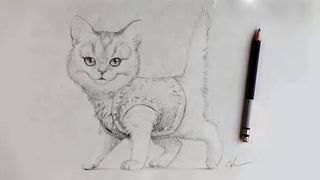
The majority of artists have a tendency to tinker with their work – even after they've signed their name. "I can always find something to change if I look hard enough, so it can be difficult to tell when a piece is truly finished," says Chiu.
However, be wary of overworking your piece. "Eventually, I make a conscious decision to put my drawing away and start something new," he continues. "That's when I consider my drawing done. Well, maybe. "
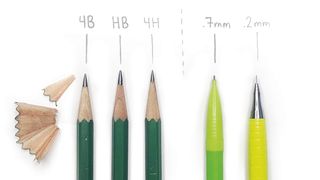
The pencil you choose will have a big impact on both the techniques you can use and the look of your find artwork. Different pencil types are better for different styles of artwork, and you also need to consider the hardness of your lead.
Traditional graphite pencils are available in a scale of hardness from 9H (hard, pale) to 9B (soft, dark), with HB and F sitting the middle of the range. "Typically, the H grades are suited to technical drawing, while B grades are ideal sketching pencils," explains Spicer. He suggests a 2B or 3B pencil is a good place to start with general pencil drawings.
Then you need to pick the type of pencil. Traditional graphite pencils tend to round out quickly, and so need regular sharpening to produce a consistent-sized tip. The softer your pencil, the more sharpening you'll need to do. Traditional pencils are great for shading, especially larger areas.
The other main option is a mechanical pencil (see our guide to the best mechanical pencils for drawing). These offer clean, crisp edges, and are better at maintaining a consistent line. You don't need to sharpen them, either. If you're creating a large artwork, bear in mind that a mechanical pencil can slow the drawing process. For a more in-depth look at your options, take a look at our guide to the best pencils.
"Some drawings require a fine, sharp point for pinning down a crisp line, others a broad, flat side to the pencil lead for blocking in tone. Sometimes, a blunt point can serve your purposes," says Spicer. "Whatever your preference, ensure you always have a sharpener on hand."
Again, there are a few options here. Choose between a regular handheld sharpener (portable, easy to use), a desk-mounted helical sharpener (typically longer-lasting, and will grind the pencil to a longer point) or a craft knife (get the point you want, but there's some danger of slicing your fingers off).
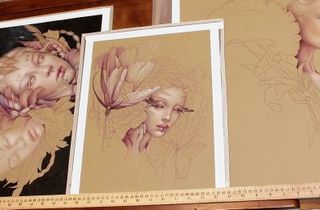
This is a valuable pencil drawing technique for beginners: put a piece of paper under my hand to avoid smudging your drawing while you're working. It seems obvious, but it can be the downfall of a great piece of work!
Healy also prefers to mount her paper on a board, attaching it using a layer of matte medium. This helps keep things neat, and provides a solid surface to work on.
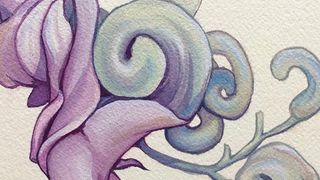
The surface texture you're working on will make a big difference to the effects you can create. This is referred to as the grain or 'tooth' of the paper. A rough tooth is more visible, and the ridges will grip the colour from your pencils.
With a smooth tooth, the ridges are very fine, and there's less grip. Healy finds this kind of paper provides an easier surface for blending coloured pencils, although she warns that it's also easy to run the colour off the surface.
There are a few different types of eraser, and each is suited to different things. Many pencils have a small eraser head, which is ideal for thinning out lines that get too thick. However, don't rely on this alone: you'll also want to invest in a kneaded eraser. This has a putty-like consistency (it's sometimes called a putty eraser), and you knead it before and after use.
"A kneaded eraser is best for lightly picking up the coloured pencil binding off the paper. This works wonders when correcting mistakes, or if you’re deliberately lifting colour from an area such as the eyes," says Healy. A gum eraser has a more solid consistency, and is better if you're trying to fully erase a coloured-in area.
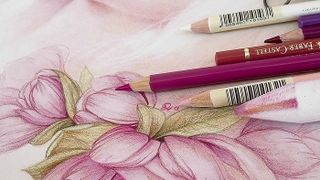
How you blend your work can have a big impact on the final result. For a soft blended effect, try a blending stump.
"After each light layer, I very gently blend the coloured pencils with the stump," says Healy. "Don’t push too hard or the colour will stick, making it more difficult to softly blend. I repeat this process as often as I need. After many layers it produces a very soft and delicate look."
This technique requires a little trial and error, though. Healy warns that if you blend too softly, the stump can pick up colour that you've already layered on the paper.